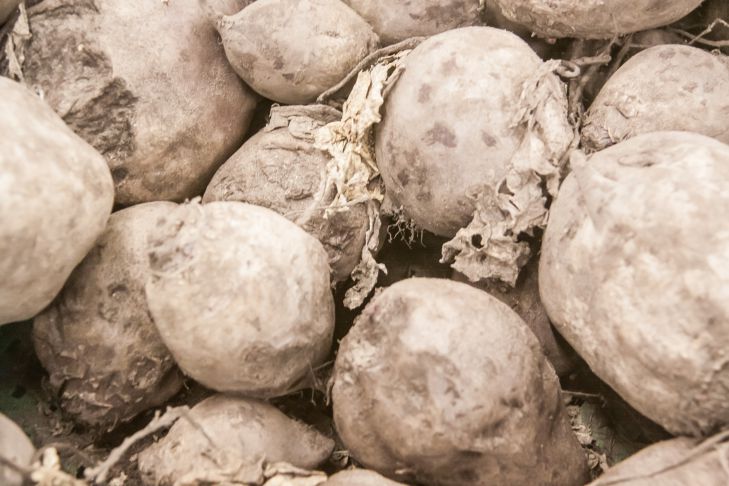To keep your beets beautiful and sweet, follow these simple tips
Many gardeners consider table beetroot an unpretentious plant - plant and dig. But this is not so, any garden crop loves good care, beetroot is no exception.
Sometimes, under undisclosed circumstances, beets become coarse, woody, with a hard center and bad taste.
There are many different ways to grow sweet and tasty beets in your garden.
Reasons why beetroot tastes bad
Table beet, depending on the variety, contains 4-11% sugar.
Factors that reduce the quality of beets:

- Bad and last year's seeds.
- Violation of the acid balance of the soil. Acidic soil can be deoxidized with wood ash or dolomite flour.
• Firm soil. Regular loosening or mulching of the bed is carried out after the beet sprouts.
• Lack of water. Beets need to be watered regularly, especially on hot days.
• Untimely harvesting of ripe beets. To prevent beets from losing sugar, they need to be harvested on time.
There is no need to add manure to the soil
When fresh manure begins to decompose, there is an intensive release of nitrogen. Nutrients get more into the beet leaves, thereby reducing the taste and growth of the root crop itself. Excess nitrogen spoils the color of the beet.
It becomes pale in color and tastes bitter. Therefore, it is necessary to add rotted humus to the soil, preferably in the fall, when preparing the garden bed for the next year.
Proper watering
Beetroot itself is a very hardy plant. Its roots grow several meters deep, so it can get water from the lower layers of soil on its own without any problems.
During prolonged hot weather, beets need to be watered frequently and well.
Afterwards, when the water enters the soil, the space between the rows needs to be loosened. You can also mulch the area with dry grass, hay, straw and sawdust from deciduous trees.
Fertilizer to increase sugar in beets
In mid-summer, active growth of the root crop begins. During this period, fertilizer should be added - a nettle solution. After 15-30 days, wood ash dissolved in water and table salt are added. It is the salt that helps sugar accumulate in the root crops.
Ingredients:
• wood ash - 2 cups;
• sea or rock salt – 1 tablespoon.
Directions for use:
• Dissolve all ingredients in 10 liters of water.
• Use the resulting solution to water the beets at the roots.
